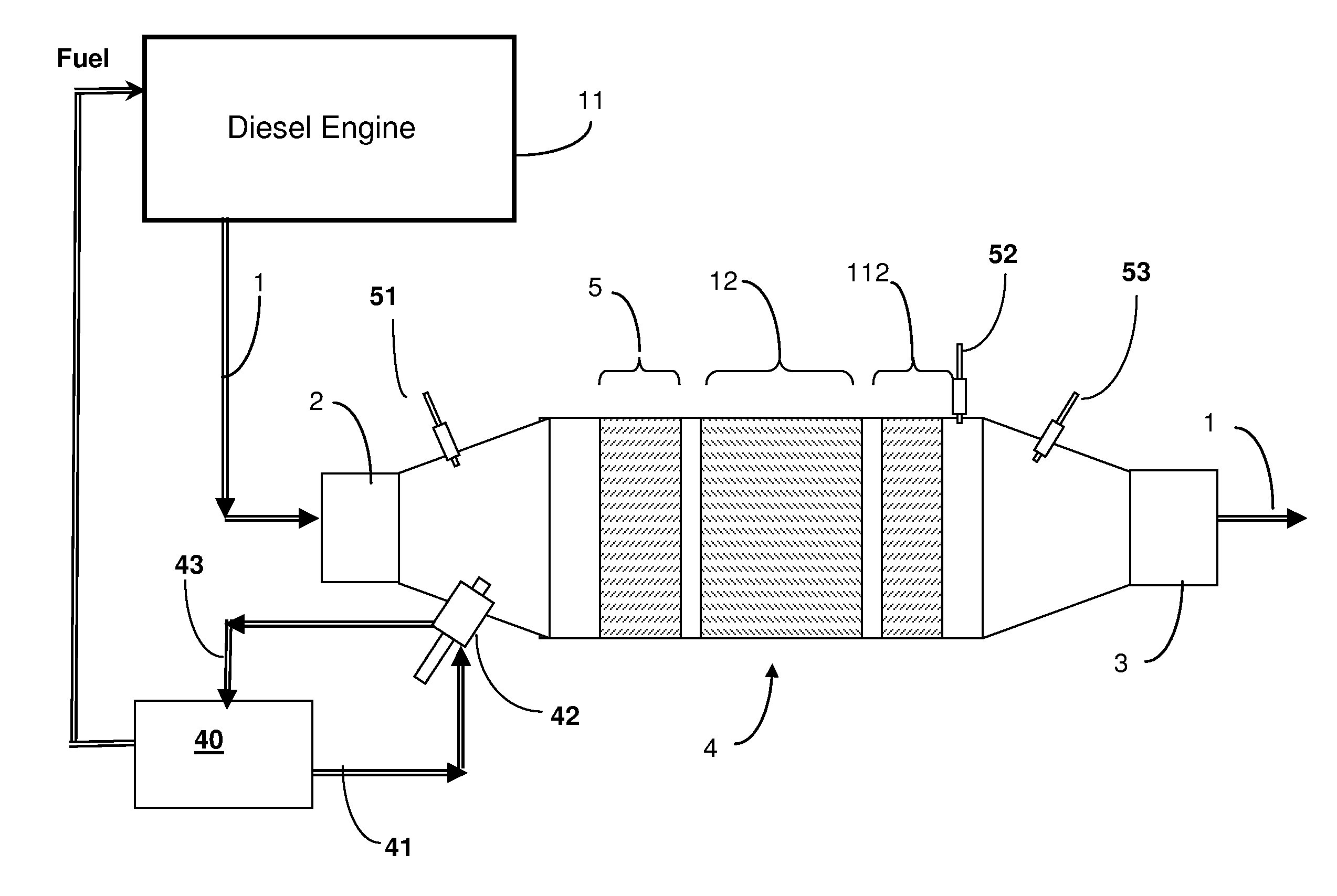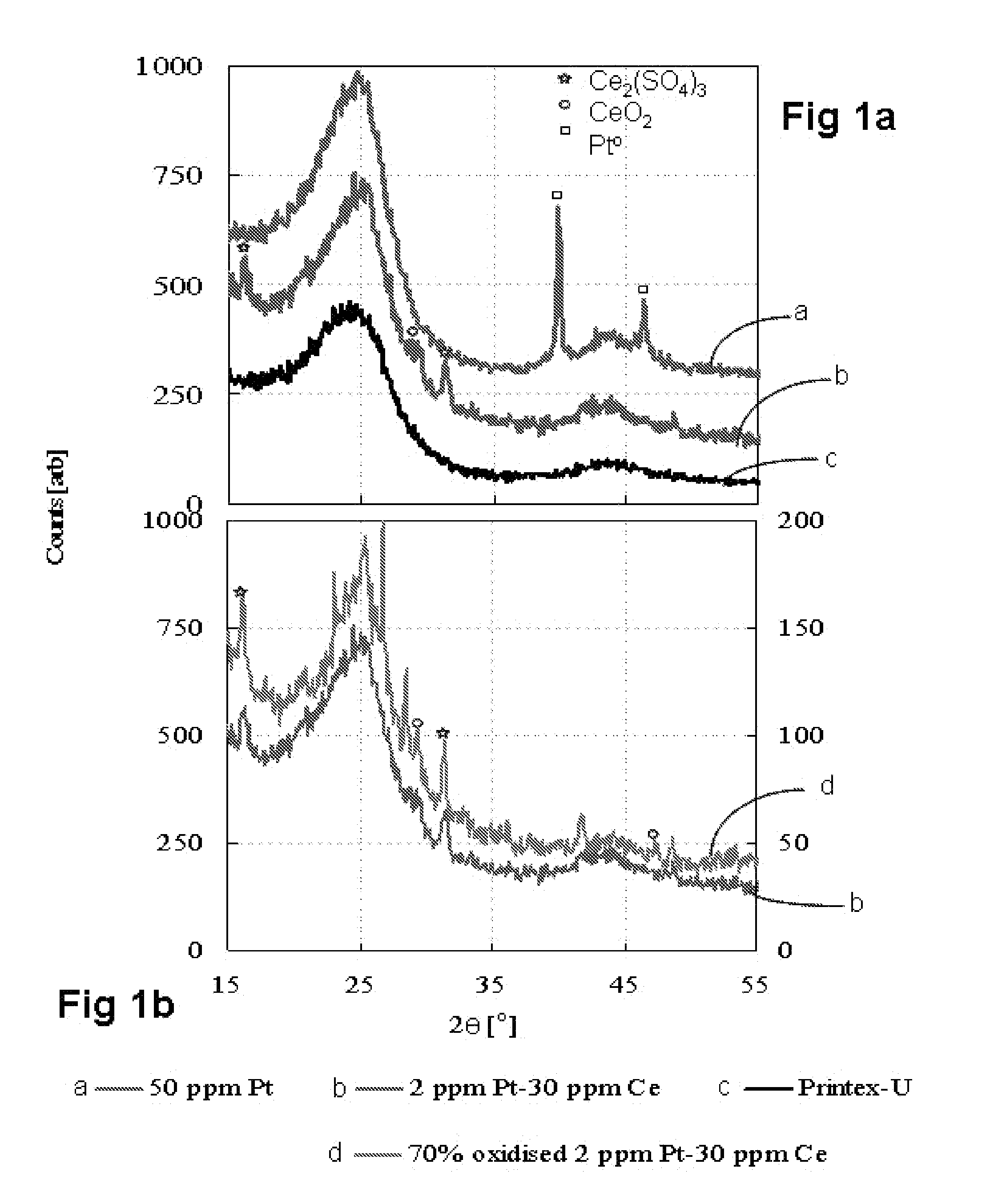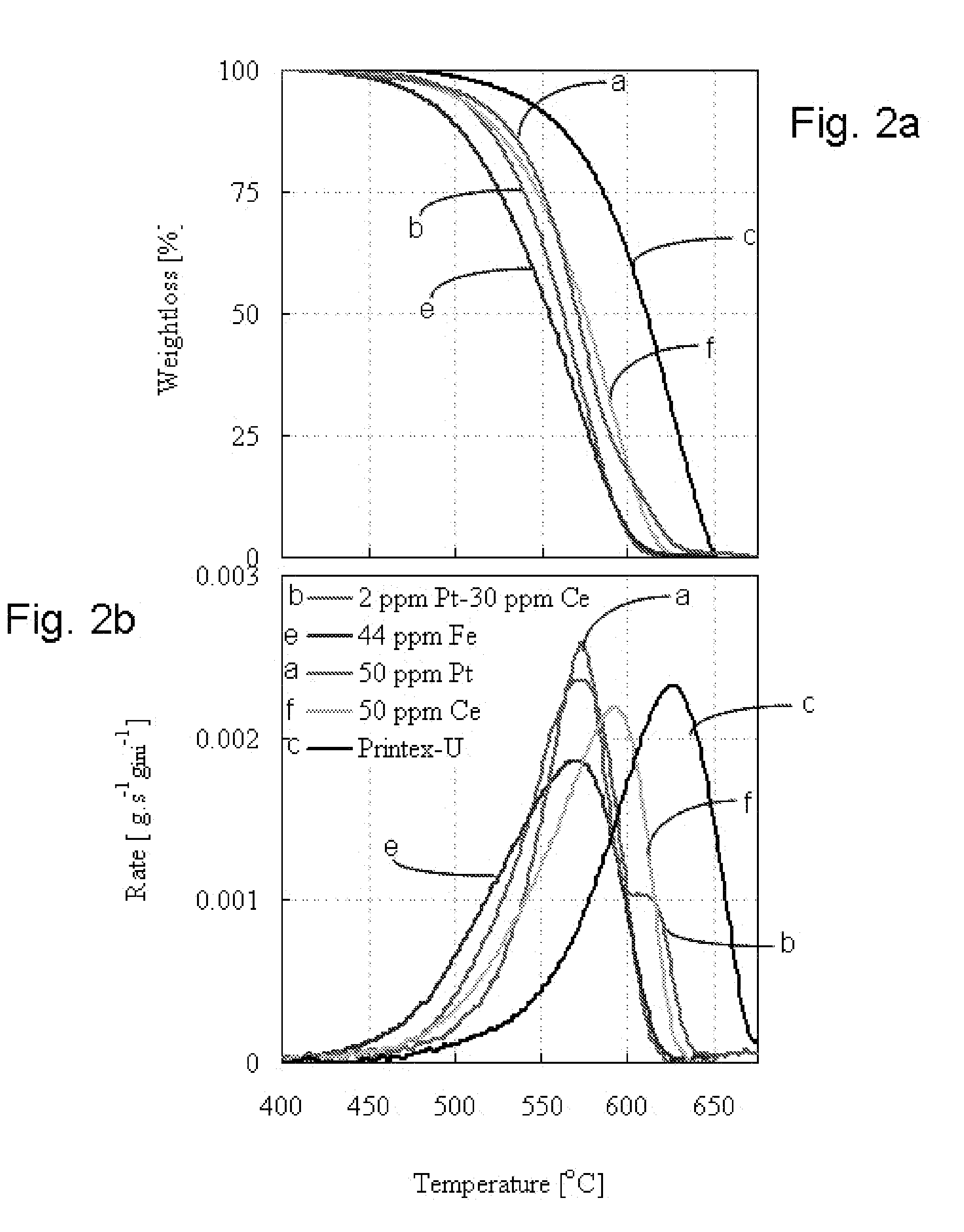Diesel particulate control
a technology of particulate control and diesel, which is applied in the direction of arsenic compounds, silicon compounds, separation processes, etc., can solve the problems of sulfate formation (particulates), deactivation of the catalytic soot filter, and lack of desired durability of the catalyst soot filter, so as to achieve the effect of high efficiency of pt—ce fuel borne catalysts and improved efficiency
- Summary
- Abstract
- Description
- Claims
- Application Information
AI Technical Summary
Benefits of technology
Problems solved by technology
Method used
Image
Examples
Embodiment Construction
[0044] The invention provides improvements in controlling the emission of particulates form diesel engines. It does so based on testing outlined in the Examples below and with the implementation of new diesel particulate filter / fuel additive combinations.
[0045] The invention is based on discoveries most easily observable with low sulfur content fuels, whereas they are effectively utilized in all fuels suitable for diesel use, including those with up to about 500 ppm sulfur. The term “fuel” is thus intended to include all of those fuels effective for operating diesel engines. The fuel can contain detergent (e.g., 50-300 ppm), lubricity additive (e.g., 25 to about 500 ppm) and other additives, as desired.
[0046] Among the fuels suitable for use in the invention are those which typically comprise a fossil fuel, such as any of the typical petroleum-derived fuels including distillate fuels. A fuel can be one or a blend of fuels selected from the group consisting of: distillate fuels, in...
PUM
| Property | Measurement | Unit |
|---|---|---|
| exhaust gas temperatures | aaaaa | aaaaa |
| temperature | aaaaa | aaaaa |
| ignition temperature | aaaaa | aaaaa |
Abstract
Description
Claims
Application Information
 Login to View More
Login to View More - R&D
- Intellectual Property
- Life Sciences
- Materials
- Tech Scout
- Unparalleled Data Quality
- Higher Quality Content
- 60% Fewer Hallucinations
Browse by: Latest US Patents, China's latest patents, Technical Efficacy Thesaurus, Application Domain, Technology Topic, Popular Technical Reports.
© 2025 PatSnap. All rights reserved.Legal|Privacy policy|Modern Slavery Act Transparency Statement|Sitemap|About US| Contact US: help@patsnap.com



